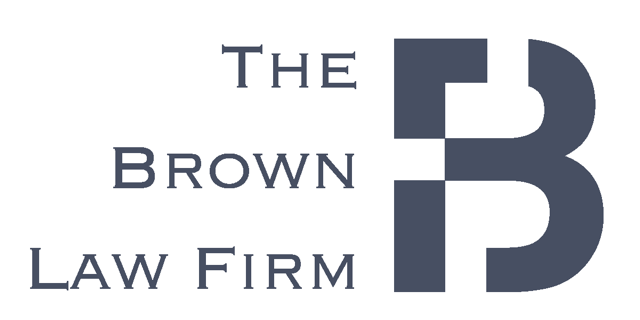Who is At Fault in a Ski Accident in Colorado?
With nearly six million people and growing, Colorado is an increasingly popular place to live, largely due to convenient access to numerous world-class ski and snowboard resorts across the state. Further, an estimated 14 million people visited Colorado last year alone for ski vacations.
Accidents and injuries are bound to happen with so many people on ski mountains each season. Ski accidents can cause a great deal of pain, costly medical bills, and other losses. It is only natural to wonder about your potential legal rights if you suffer injuries.
After a ski accident, allow a trusted Colorado ski accident attorney to evaluate your circumstances immediately.
Not Every Ski Accident Leads to an Injury Claim
Not every ski accident automatically leads to an injury claim. The Colorado Ski Safety Act provides certain protections and limitations on liability for ski operators and recreational sport participants.
In many cases, injured victims must rely on their health insurance to cover medical bills.
However, in some situations, you can hold others legally responsible for causing injuries on a ski mountain. Do NOT automatically assume no one is liable.
If you suspect your accident was due to someone else’s negligence, always consult a Colorado ski accident lawyer immediately.
Overview of Liability Under the Colorado Ski Safety Act
The Colorado Ski Safety Act plays a significant role in determining fault and responsibility for injuries sustained while skiing. Under the Colorado Ski Safety Act, skiers assume the inherent risks of skiing, meaning they accept responsibility for certain risks associated with the sport.
These risks include:
- Collisions with other skiers
- Changing weather conditions
- Variable terrain
Skiers have a duty to ski in control and within their abilities to minimize the chances of accidents.
However, Colorado law recognizes that certain factors can affect skiers’ safety. In such cases, you can hold other parties responsible for any injuries due to their negligence. Therefore, seek legal advice from an experienced ski accident attorney familiar with the Colorado Ski Safety Act to understand your options and protect yourself.
When Liability Applies to Ski Accidents
Liability in ski accidents typically falls under two categories: other skiers and ski operating companies. Let’s explore each of these categories in more detail.
Other Skiers
The actions of other skiers play a significant role in determining liability for ski accidents. Skiers owe each other a duty of care to ski responsibly and avoid actions that may cause harm to others.
Examples of situations where you can hold another skier include:
- Failure to yield right-of-way: Skiers coming downhill generally have the right-of-way over skiers traversing across a ski run. If a skier fails to yield to another skier who has the right-of-way, and a collision or injury occurs as a result, you can hold the at-fault skier liable.
- Failure to maintain control: Skiers are responsible for maintaining control and skiing within their ability level. If a skier is on terrain far too difficult for them and loses control, crashing into another skier and injuring them, you can hold them at fault for the accident.
- Failure to avoid a collision with a skier downhill: Skiers heading downhill must pay attention and avoid collisions with other skiers or obstacles below them. If an above skier fails to avoid a collision with a downhill skier, causing injury, it may result in liability for the skier responsible.
- Using Lifts or Tows Without Proper Ability: You can hold skiers who attempt to use lifts, T-bars, or rope tows that exceed their ability level or agility abilities accountable if they fall into the paths of others and cause injuries.
These are some examples of how other skiers can be negligent and liable for your injuries. Once your ski accident attorney identifies another skier’s liability, they can advise on the next steps to seek compensation.
Ski Operating Companies
Ski operating companies also have a duty of care to skiers using their facilities. They must maintain safe conditions and comply with the Colorado Ski Safety Act.
Some scenarios where you can hold a ski operating company at fault include:
- Inadequate signage: Ski resorts must provide clear and conspicuous signage to alert skiers about potential hazards and instructions on what to do and when. This includes staying within bounds, skill levels in the terrain, getting on and off chair lifts, and more. Failure to do so may result in liability if an accident occurs due to inadequate warnings or signs.
- Failure to maintain equipment or manmade terrain: Ski resorts must properly maintain ski lifts, equipment, and groomed trails, among others. The ski operating company may be liable if an accident occurs due to equipment failure or poorly maintained terrain. This especially applies to terrain parks and similar areas.
- Other violations of the Colorado Ski Safety Act: The Colorado Ski Safety Act outlines specific requirements and obligations for ski area operators. If a ski resort violates any provisions of the act, and an accident occurs, such violations can prove liability.
Proving Liability is Challenging
Proving liability in a ski accident can be challenging, as it often involves complex legal and factual issues. Further, ski companies have deep pockets and legal teams, which use liability waivers and other legal mechanisms to try to avoid liability whenever possible.
Gathering evidence, such as witness statements, ski patrol reports, and expert testimony, is necessary for establishing fault. You must consult an experienced Colorado ski accident lawyer who can handle the legal process and build a strong case on your behalf.
Consult a Colorado Ski Accident Lawyer Immediately
After a ski accident in Colorado caused by someone else, never wait to schedule a free consultation with a Colorado personal injury attorney. Time is of the essence in personal injury cases, as important evidence can disappear with time.
